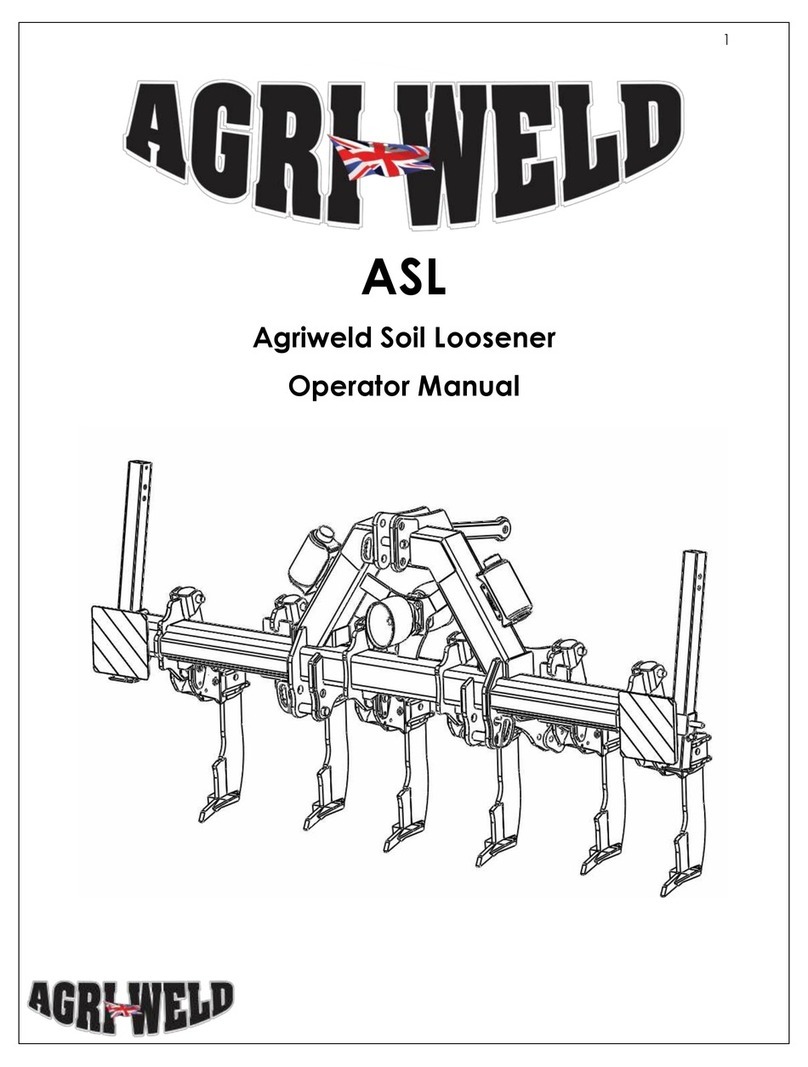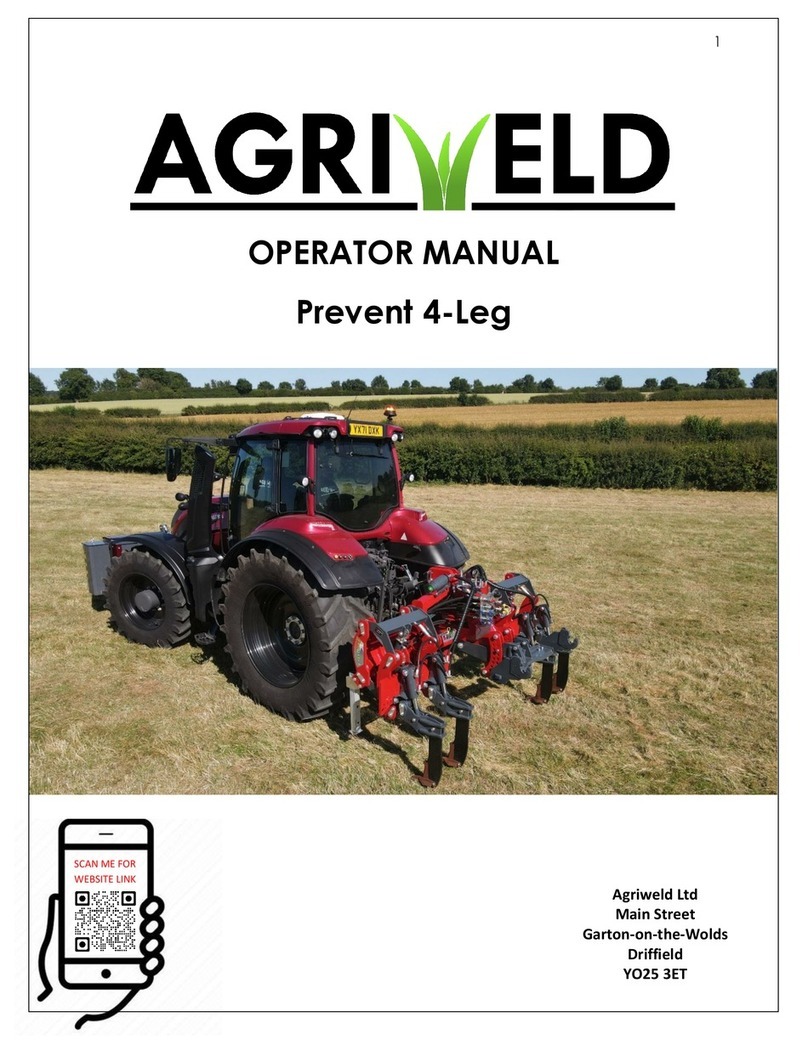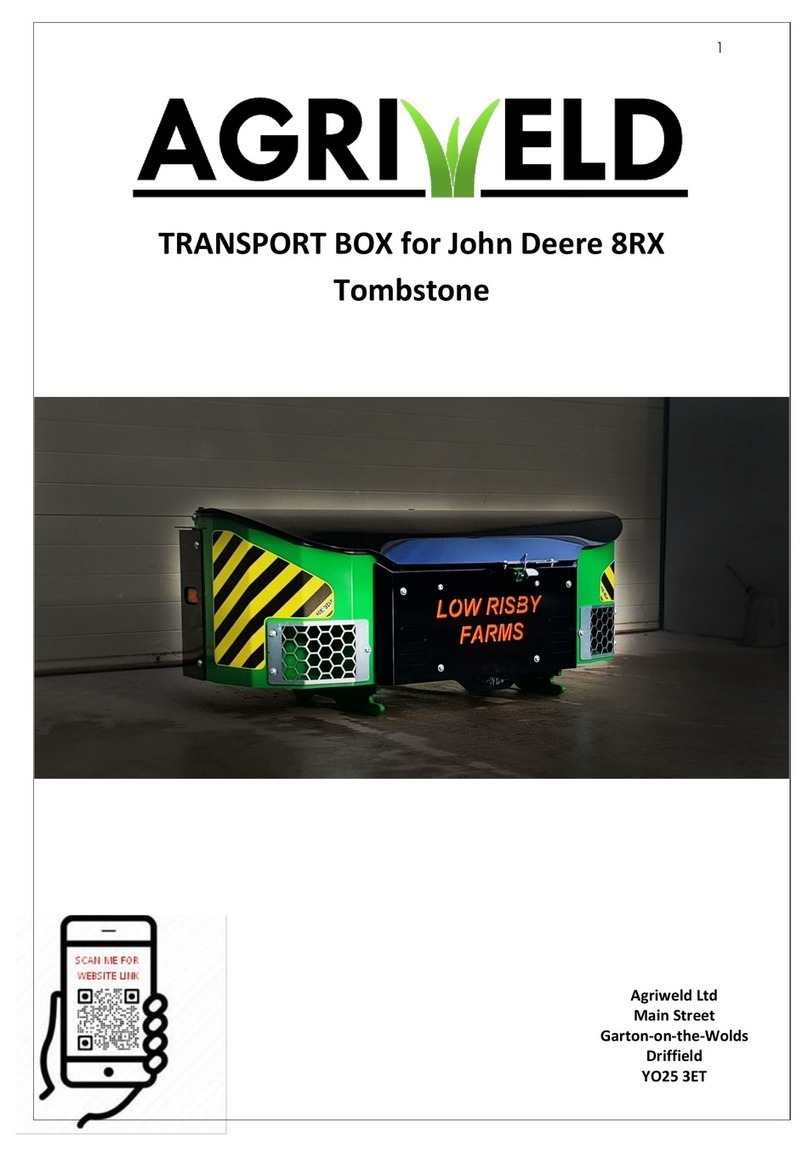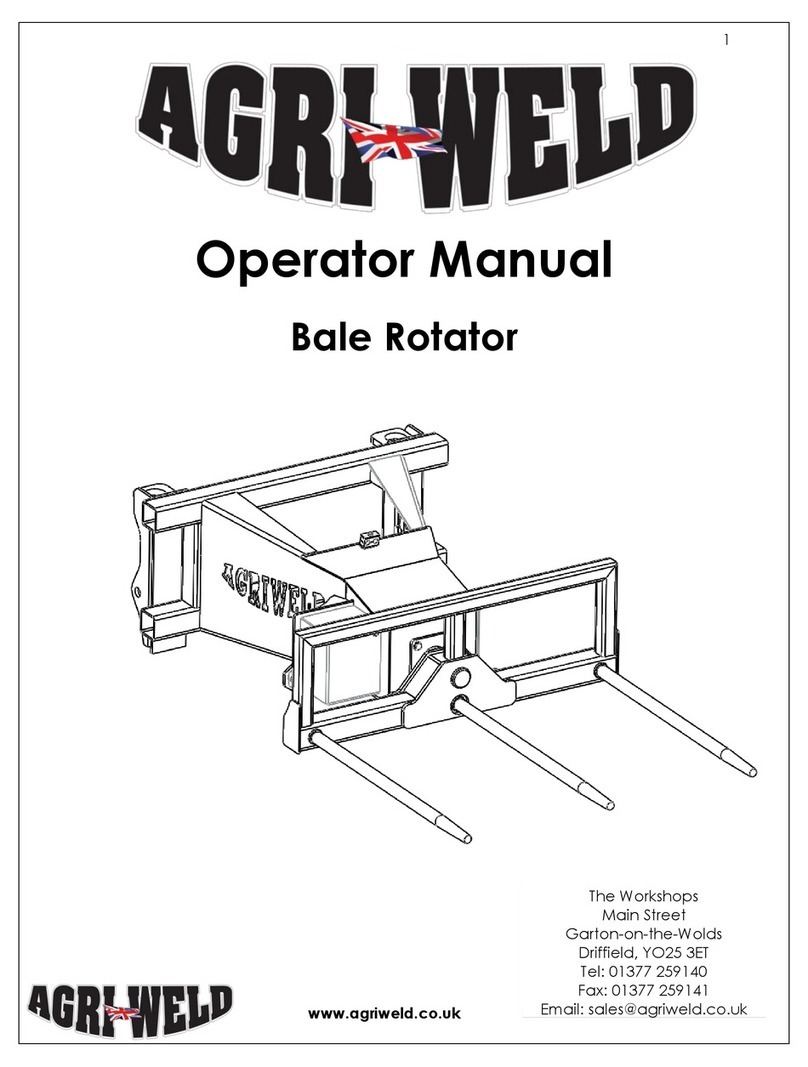4
USER INFORMATION
This manual contains basic advice, generic to all Agriweld Multi Till 5T machines, which
should be observed during setting-up, operation and maintenance. It must be read by
all personnel who may operate this machine prior to use and be available at all times to
each potential operator.
If safety instructions are not complied with, it can lead to the risk of injury to yourself and
others as well as damage to the environment or to the machine. Non-compliance to the
safety instructions can also lead to claims for damages becoming invalid.
New equipment - be careful!
It is very important to be careful when new equipment is going to be used for the first
time. Incorrect mounting of equipment and operational errors can lead to expensive
repair work and operational losses.
Your warranty with Agriweld is not valid if the instructions in this operating manual are not
followed correctly.
QUALIFICATION AND TRAINING
•Experienced* personnel only may perform any work on, or with the machine.
Statutory minimum age limits must be observed.
•Only trained and instructed staff, with the correct certification or licence to use,
operate, set up and maintain this machine should be authorised to do so.
Individual responsibilities of personnel concerning operation, setting up,
maintenance and repair must be clearly established.
•Define the machine operator’s responsibilities – also with regard to observing
traffic regulations. The operator must have the authority to refuse any instructions
issued by third parties, which contravene safety.
•Persons undergoing training or instruction should not be allowed to work on or with
the machine unless they are under the constant supervision of an experienced
person.
•The use of spare parts, accessories and ancillary equipment not supplied and/or
not approved by Agriweld could have detrimental effects to this machine or its
functions and hence impair the active and/or passive driving and/or operational
safety (accident prevention).
•Agriweld shall not be liable for any damage caused by the use of spare parts,
accessories and ancillary equipment not supplied and/or approved by Agriweld.
•Conversions of, or modifications to the machine may only be carried out after
consultation with Agriweld.
































